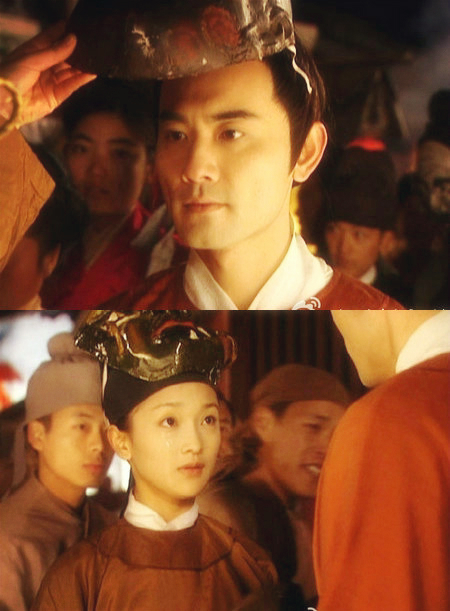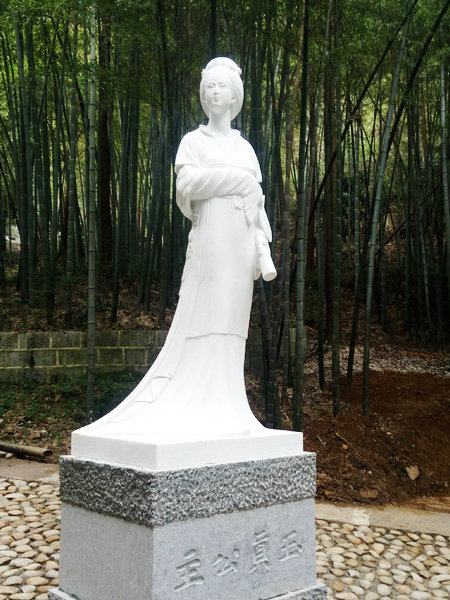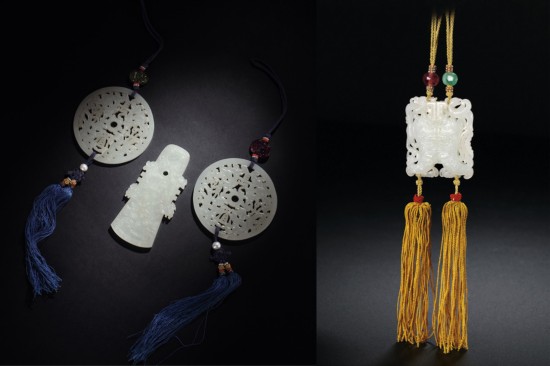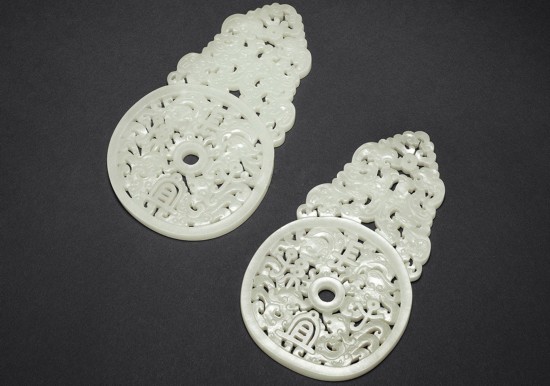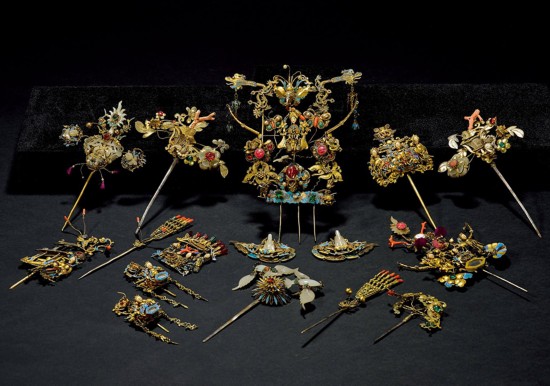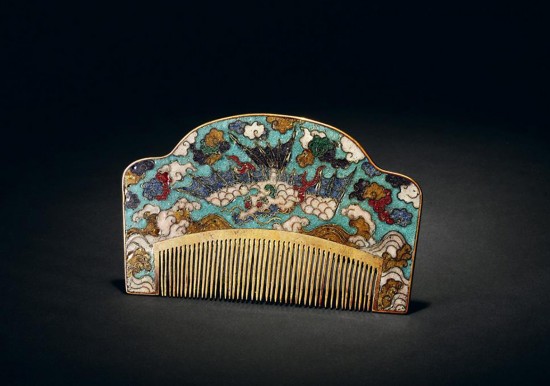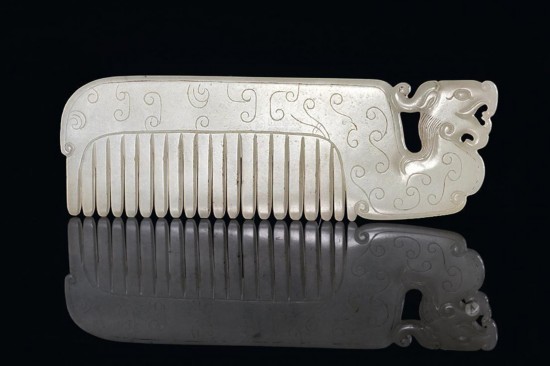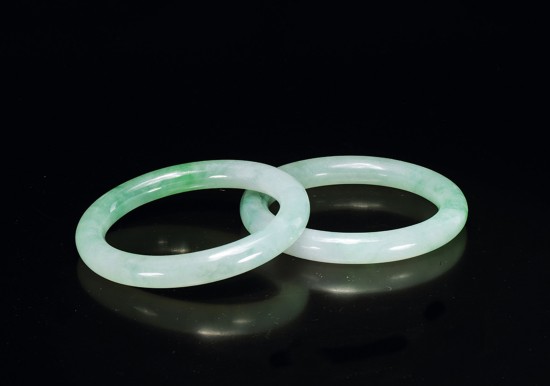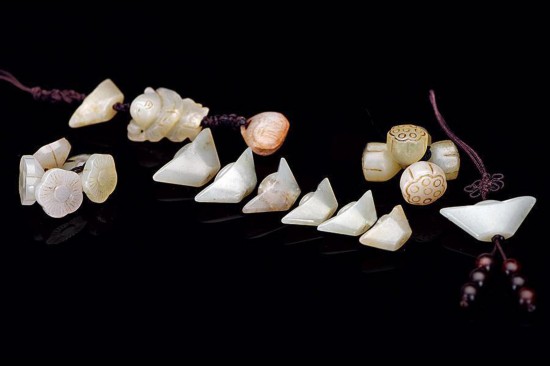Two shots from the 2000 TV seriesDa Ming Gong Ci,featuring Princess Taiping's first accidental meeting with her future husband Xue Shao on the night of Lantern Festival in the Tang Dynasty. [Photo/Sina Weibo]
Compared to ancient people, we should feel grateful for having more freedom to find the person we want to be with. In ancient China, marriage was often decided by parents or even the government. And during some periods, like the Jin Dynasty (265-420), marriage policies could go to extremes. Single women must get married by a certain age. If a female was still single at 17, there would be a forced marriage with local administrators' involvement.
Extreme policies to force people to get married were rare. Ancient Chinese had milder ways to encourage people to find a spouse.
As early as the Zhou Dynasty (c.11th century-256BC), officials in charge of people's marriages appeared.The Rites of Zhou(Zhou Li), a Chinese book on organizational and bureaucracy theory that came out in the middle of the 2nd century BC, recorded the creation of this kind of officer, who served to manage people's marriages.
During the Three Kingdoms (220-280), Southern frontiers in China that were still behind in civilization had official matchmakers as well.
The traditional complicated engagement processes before marriage were also simplified by the policies of the Tang (618-907) and Song (960-1279) governments, to encourage more people to get married quickly.
Official match makers became more professional, especially appointed by the government even with certifications later in the Yuan Dynasty (1271-1368).
And in the Qing Dynasty (1644-1911), there were many such matchmakers in Xinjiang where large numbers of male criminals and farmers were sent for land reclamation. And to let them settle down, official match makers would help the singles to find spouses.
Yet not all of them were lucky enough to marry someone, due to the small number of women in the area.
Statue of Princess Yuzhen. [Photo/Sina Weibo]
Opportunities during festivals
Ancient Chinese still had certain freedoms to get married with people they liked, rather than being completely manipulated by their parents or government.
In the Spring and Autumn Period (770-476BC), there was an annual "Mid-Spring Meeting" on the third day of lunar March that provided unmarried people a chance to get to know each other.
InThe Rites of Zhou, it is recorded that men and women who fell in love during this meeting can get married freely without their parents interfering. On this day, unmarried females who often stayed at home would come out and had fun near the river bank. Each single man would let his cup of wine run down from the upper reaches of the river. And the woman needed to take the wine if a cup stopped before her. Once she and the cup's owner were satisfied with each other, they would have more free communication later.
Lantern Festival was another opportunity for single people to meet. On the night of that day, unmarried men and women would meet at the flower fair and lantern-decorated street.
Romance often happened, although not all of them ended in happiness.
Ouyang Xiu, a famous poet from the Song Dynasty, depicted a woman's longing for the man she met during Lantern Festival in his poem Yuan Xi.
It goes like this: "last lantern festival, the flowers fair decorated with lights were daylight bright. We met after dusk when the moon rose behind willow trees. This year the moon and lanterns are still the same, yet you are not here anymore. I am sad, with tears shed on the sleeves of my spring coat."
Different lifestyles
However, there were still some people who enjoyed being single and willingly chose to lead their own lifestyle.
According to an epitaph in the Forest of Stone Steles Museum in Xi'an, Shaanxi province, a hermit whose surname was Liu from the Jin Dynasty (1115-1234) chose to remain single.
Liu spent most of his time collecting and appreciating calligraphy and paintings. He said he would like to marry someone, but if he could not find the one he really loved, he would rather be single.
Some ancient Chinese women chose to look after her parents instead of getting married. InZhan Guo Ce, an important text of the Warring States Period (475-221BC), recorded Beigong Yingerzi who willingly spent her life taking care of elder parents. Yingerzi later became the synonym for filial women.
And a certain number of men and women preferred a silent single life in monasteries as monks, nuns or Taoist priests. Not only common people but also royals made this choice.
Princess Jinxian and her little sister Princess Yuzhen from the Tang Dynasty chose to be Taoist priests. Their father, Emperor Li Dan, supportively spent a large sum of money to build Taoist temples for his beloved daughters.
A pair of Qing Dynasty jade pendants sold for 667,000 yuan ($100,050) at the 2013 Beijing Poly auctions (L). A pair of Qing Dynasty jade pendants sold for 920,000 yuan ($138,000) at the 2015 Beijing Poly autumn auctions (R). [Photo/ artron.net]
The Valentine's Day is here! Have you ever been caught up in a situation that leaves you clueless on what item to buy for your boyfriend or girlfriend? The ancient Chinese were never baffled by this problem. Here are some classic gifts for lovers during ancient times. Check it out and it may provide you with unique gift ideas.
Jade pendants
The ancient Chinese usually gave their lovers something small so that they could easily take it everywhere. A jade pendant is a good choice. Moreover, according to old customs, ancient couples sometimes exchanged their jade pendants at their engagement ceremony, so these little jade decorations top the list of ancient love gifts.
A pair of Qing Dynasty jade pendants sold for 1,840,000 yuan ($267,535) at the Rongbaozhai 2012 spring auctions. [Photo/ artron.net]
A hairpin during Qing Dynasty sold for 161,000 yuan ($24,150) at the Beijing Poly 2011 spring auctions (L). A pair of hairpins during Qing Dynasty sold for 92,250 yuan ($14,400) at the Sotheby's Hong Kong 2011 autumn auctions (L). [Photo/ artron.net]
Hairpins
Hairpins were also a common gift for a man to give his girlfriend in ancient times. An old tradition in China was that women would cut a small lock of hair to give to their beloved at their engagement, so hair decorations symbolize a promise of love.
A set of hairpins during Qing Dynasty sold for 207,000 yuan ($30,084) at the China Guardian 2015 spring auctions. [Photo/ english.cgaurdian.com]
A Qing Dynasty comb sold for 33,600 yuan ($4,883) at the Beijing Hanhai 2010 spring auctions. [Photo/ artron.net]
Comb
There is a beautiful Chinese idiom, “Bai tou xie lao”, meaning the happy couple will be together until their hair turns white. Giving a comb to a loved one is a romantic promise which means “I want to be with you until we get old together”.
A Qing Dynasty jade comb sold for 17,250 yuan ($2,588) at the Beijing Hanhai 2013 spring auctions. [Photo/ artron.net]
A Song/Yuan Dynasty comb sold for 506,575 yuan ($73,600) at the Hong Kong Changfeng 2009 spring auctions. [Photo/ artron.net]
A pair of jade bracelet during Qing Dynasty sold for 345,000 yuan ($50,118) at the China Guardian 2013 autumn auctions. [Photo/ english.cguardian.com]
Jade bracelet
Ancient Chinese women loved bracelets so much. It never fails to give a woman a pair of exquisite jade bracelets.
A couple of gold gilt bracelets during Qing Dynasty sold for 115,000 yuan ($16,706) at the China Guardian 2014 Autumn Auctions. [Photo/ english.cguardian.com]
A couple of gold gilt bracelets during Qing Dynasty sold for 115,000 yuan ($16,706) at the China Guardian 2014 Autumn Auctions. [Photo/ english.cguardian.com]
Fan pendants during ancient times. [Photo/ artron.net]
Fan pendant
Ancient Chinese men usually carried folding fans in summer. A fan pendant for the man you loved was a good idea in ancient times.

A set of embroidered purses during Qing Dynasty sold for 17,250 yuan ($2,505) at the 37th China Guardian Quarterly Auctions. [Photo/ english.cguardian.com]
Hand-made Purse
Most ancient Chinese women were good at embroidery. A hand-made embroidered purse for the man they loved represents their true love.
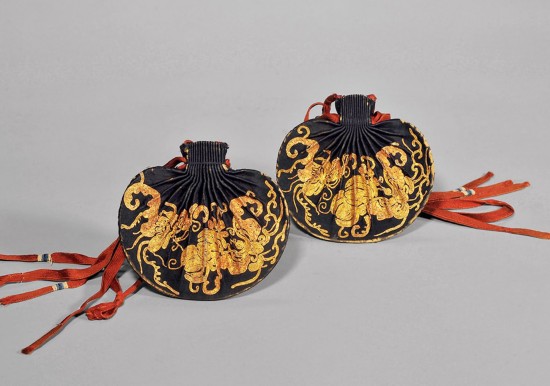
A pair of embroidered purses during Qing Dynasty sold for 10,350 yuan ($1,503) at the 30th China Guardian Quarterly Auctions. [Photo/ english.cguardian.com]


















